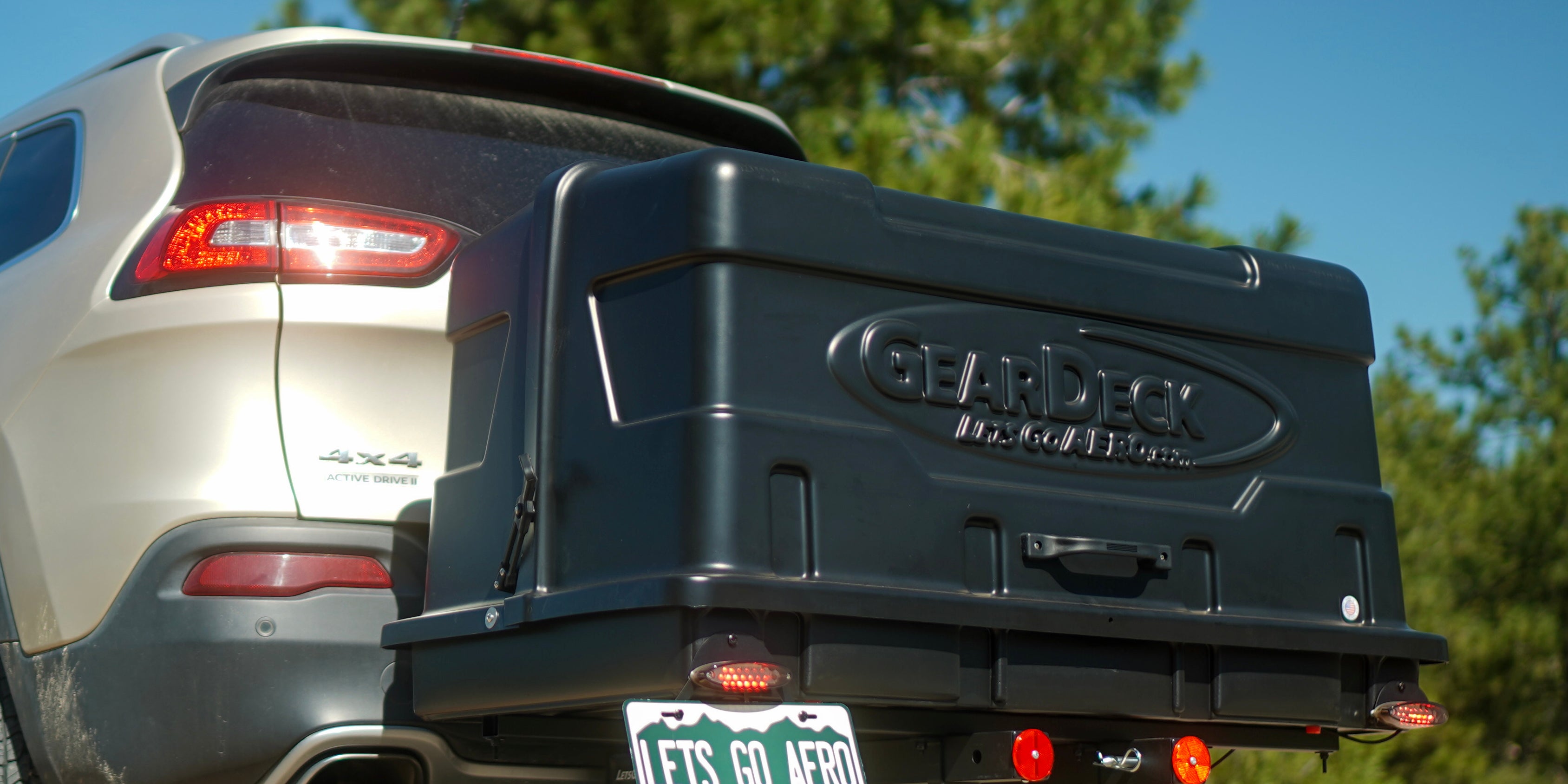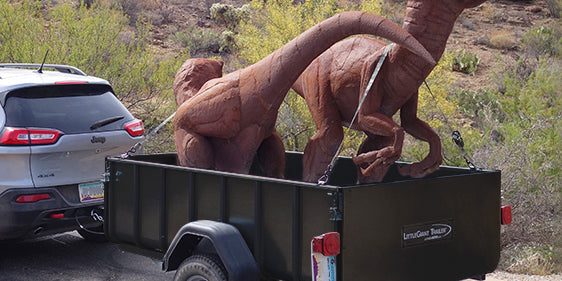Hitch Carriers vs. Rooftop Carriers: A Fuel Efficiency Perspective

Our team at Let’s Go Aero is always on the lookout for ways to enhance our customers adventures. One common question we encounter is the choice between hitch carriers and rooftop carriers for transporting extra gear. Today, we're going to dive into this topic, focusing on the impact of these carriers on your vehicle's fuel economy.
Rooftop carriers are a popular choice for many adventurers. They offer the flexibility to expand your vehicle's cargo capacity without the need to invest in a larger vehicle. Whether you're packing for a summer road trip or a frosty ski vacation, these storage boxes are a popular choice.

But hold onto your hats! Before you start singing rooftop carrier praises, don't overlook their impact on your vehicle's fuel economy. According to Consumer Reports, mounting these carriers can significantly affect your vehicle's mileage. Their experts measured the impact on a 2019 Nissan Altima sedan and a 2019 Toyota RAV4 small SUV, both traveling at 65 mph, and found a noticeable decrease in fuel efficiency.
The U.S. Department of Energy's Office of Energy Efficiency & Renewable Energy further supports this finding. Their testing revealed that a cargo box on top of a vehicle can decrease fuel economy by up to 25% compared to using a rear cargo tray. They tested two vehicles – a 2009 Toyota Corolla and a 2009 Ford Explorer – with no cargo, with 100 lbs. of cargo in a rooftop box, and with 100 lbs. of cargo on a rear tray. At 65 mph, the rooftop box resulted in a significant decrease in fuel economy, while the rear cargo tray produced only a 1% decrease.

So, what does this mean for you as an adventurer? While rooftop carriers offer a flexible way to carry extra gear, they can also lead to higher fuel costs. A recent GearDeck customer with a 2020 Toyota Sienna van is a great example of just how big the extra fuel cost of using a rooftop box is. During the Summer of 2022, Nate used a brand name rooftop box on his Sienna for a 2,000-mile round trip from Colorado Springs, to Boise, ID, and got 300 miles per tank of gas. This year with the GearDeck attached to the Sienna, his full tank range grew 33% to 400 miles per tank. So, for each three tanks of gas using the rooftop box, Nate got the 4th one free based only on the aerodynamic efficiency of the GearDeck when traveling extended distances at 80mph+.
Fun fact: The “Aero” in Let’s Go Aero stands for “Aerodynamic” because it is always our goal to create products that flow with your vehicle instead of weighing them down. Knowing that hitch based products provide a more fuel-efficient alternative, Let’s Go Aero has never produced a rooftop hitch carrier or bike rack. With a hitch carrier you can carry the same amount of gear without the significant impact on your vehicle's fuel economy.

At Let's Go Aero, we're committed to providing products made by adventurers, for adventurers. Our hitch carriers like the GearDeck, GearSpace and GearCage are designed with this ethos in mind, offering all the benefits of extra storage capacity without the loss of fuel efficiency. So, asyou plan your next adventure, our recommendation will always be a hitch carrier. Not only will you have the space for your gear, but you'll also enjoy the journey with less trips to the gas station and less impact on your wallet and the environment.
Remember, adventure is out there, and Let's Go Aero is here to help you embrace it in the most efficient way possible. Happy adventuring!
- Tags: Cargo Carriers Travel
0 comments


